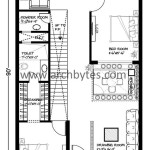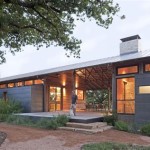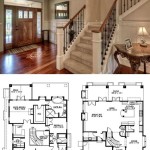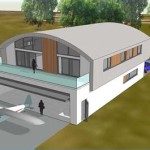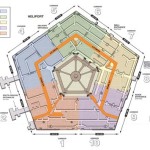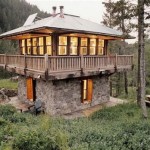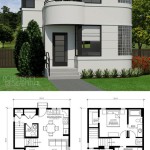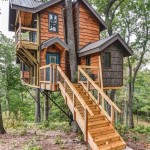Plans For Beach Houses On Stilts: An Elevated Perspective
Beach houses on stilts, also known as pile dwellings, are a popular architectural solution for coastal regions susceptible to flooding, erosion, and storm surges. These elevated structures offer numerous advantages over traditional ground-level construction, providing enhanced protection from the elements and offering breathtaking views. Understanding the nuances of planning and designing such homes is crucial for ensuring their safety, durability, and aesthetic appeal.
The construction of a beach house on stilts is a complex undertaking that requires careful consideration of various factors, including local building codes, environmental regulations, soil conditions, and the specific needs and preferences of the homeowner. A well-defined plan is essential for navigating these challenges and achieving a successful outcome. This article delves into the key aspects of planning for beach houses on stilts, providing valuable insights for architects, builders, and homeowners alike.
Key Point 1: Site Assessment and Environmental Considerations
The initial stage of planning a beach house on stilts involves a thorough assessment of the building site. This assessment should encompass a range of factors, including the topography of the land, the type of soil, the proximity to the water, and the prevailing weather patterns. Geotechnical investigations are crucial for determining the load-bearing capacity of the soil and identifying any potential hazards, such as unstable ground or the presence of groundwater.
Coastal environments are inherently dynamic and subject to constant change. Erosion, accretion, and sea-level rise can significantly impact the stability of a building site over time. Therefore, it is essential to conduct a comprehensive analysis of these factors and incorporate appropriate measures into the design to mitigate their effects. This may involve the use of erosion control techniques, such as seawalls or revetments, or the implementation of strategies to accommodate future sea-level rise.
Environmental regulations play a significant role in the planning and construction of beach houses on stilts. Many coastal areas are subject to strict zoning laws and environmental protection measures designed to safeguard sensitive ecosystems and prevent pollution. It is imperative to consult with local authorities and obtain all necessary permits before commencing any construction work. Compliance with environmental regulations may require the implementation of specific design features, such as rainwater harvesting systems, graywater recycling systems, and energy-efficient building materials.
The selection of appropriate building materials is another crucial consideration. Materials that are resistant to corrosion, moisture, and ultraviolet radiation are essential for ensuring the longevity of the structure in a harsh coastal environment. Pressure-treated lumber, composite decking, and stainless steel fasteners are commonly used in the construction of beach houses on stilts. The use of sustainable and eco-friendly materials is also increasingly encouraged.
Key Point 2: Structural Design and Building Codes
The structural design of a beach house on stilts is paramount for ensuring its stability and resistance to extreme weather events. The foundation system, which consists of the pilings or stilts that support the structure, must be designed to withstand the anticipated loads from wind, waves, and seismic activity. Engineering calculations are essential for determining the appropriate size, spacing, and depth of the pilings.
Building codes for coastal construction often include specific requirements for the design and construction of elevated structures. These codes typically address issues such as the minimum height of the lowest habitable floor above the base flood elevation, the design of the pilings, and the bracing of the structure. Compliance with these codes is essential for ensuring the safety and integrity of the building.
The selection of the appropriate piling material is a critical decision. Wood pilings, typically treated with preservatives to prevent decay, are a common choice. Concrete pilings offer greater strength and durability but are generally more expensive. Steel pilings provide excellent resistance to bending and buckling but are susceptible to corrosion in marine environments. The choice of piling material should be based on a careful consideration of the site conditions, the anticipated loads, and the budget.
The superstructure of the beach house, which consists of the walls, roof, and floor system, must be designed to work in conjunction with the foundation system to resist the forces of nature. Proper bracing is essential for preventing lateral movement and ensuring the overall stability of the structure. Wind-resistant design features, such as hurricane straps and impact-resistant windows, can further enhance the building's ability to withstand extreme weather events.
Key Point 3: Architectural Design and Functional Considerations
The architectural design of a beach house on stilts should be carefully considered to maximize its functionality, aesthetics, and integration with the surrounding environment. The elevated position of the house provides opportunities for panoramic views and enhanced natural ventilation. Thoughtful design can capitalize on these advantages and create a comfortable and enjoyable living space.
The layout of the interior spaces should be designed to optimize the flow of traffic and provide ample natural light. Open floor plans are a popular choice for beach houses, as they allow for greater flexibility and a sense of spaciousness. The placement of windows and doors should be carefully considered to capture the best views and maximize natural light while minimizing heat gain.
Outdoor living spaces are an integral part of the beach house experience. Decks, balconies, and porches provide opportunities for relaxation, entertainment, and connection with nature. The design of these spaces should be carefully integrated with the overall architectural design of the house. The use of durable and weather-resistant materials is essential for ensuring the longevity of outdoor living areas.
Accessibility is an important consideration in the design of beach houses on stilts. Elevators or ramps may be necessary to provide access for people with disabilities or mobility limitations. The design should comply with all applicable accessibility standards and regulations.
The aesthetic appeal of a beach house on stilts is a subjective matter, but certain design principles can enhance its visual harmony with the surrounding environment. Natural materials, such as wood and stone, can create a sense of warmth and connection with the landscape. Simple, clean lines and a minimalist aesthetic can complement the natural beauty of the coastal setting. The color palette should be carefully chosen to blend with the surrounding environment.
In addition to the core structure, several functional considerations should be addressed during the planning process. These include the provision of adequate storage space for beach gear, outdoor furniture, and other items. The design should also incorporate features to minimize sand and water intrusion, such as outdoor showers and foot washes. The placement of utilities, such as water heaters and air conditioning units, should be carefully considered to minimize their impact on the aesthetics and functionality of the house.
The planning and construction of a beach house on stilts present unique challenges and opportunities. By carefully considering the site conditions, structural requirements, architectural design, and functional considerations, it is possible to create a safe, durable, and aesthetically pleasing home that enhances the coastal living experience. Thorough planning and collaboration with experienced professionals are essential for achieving a successful outcome.

Beach House Plans Coastal Home Great Design

Plan 44026td Classic Florida Er Beach House Plans Coastal

Beach House Floor Plans Coastal Carriage

Home Plan Ch464

House Design Plan Ch539 3 Stilt Plans On Stilts Carriage

Beach House Plans Archives From Home Designs

Beachfront Coastal House Plan 116 1094 4 Bed 2490 Sq Ft Home

Coastal House Plan Ch672

Plan 44116td Low Country Beach House Contemporary Plans Coastal

Beach House Plans Archives From Home Designs

